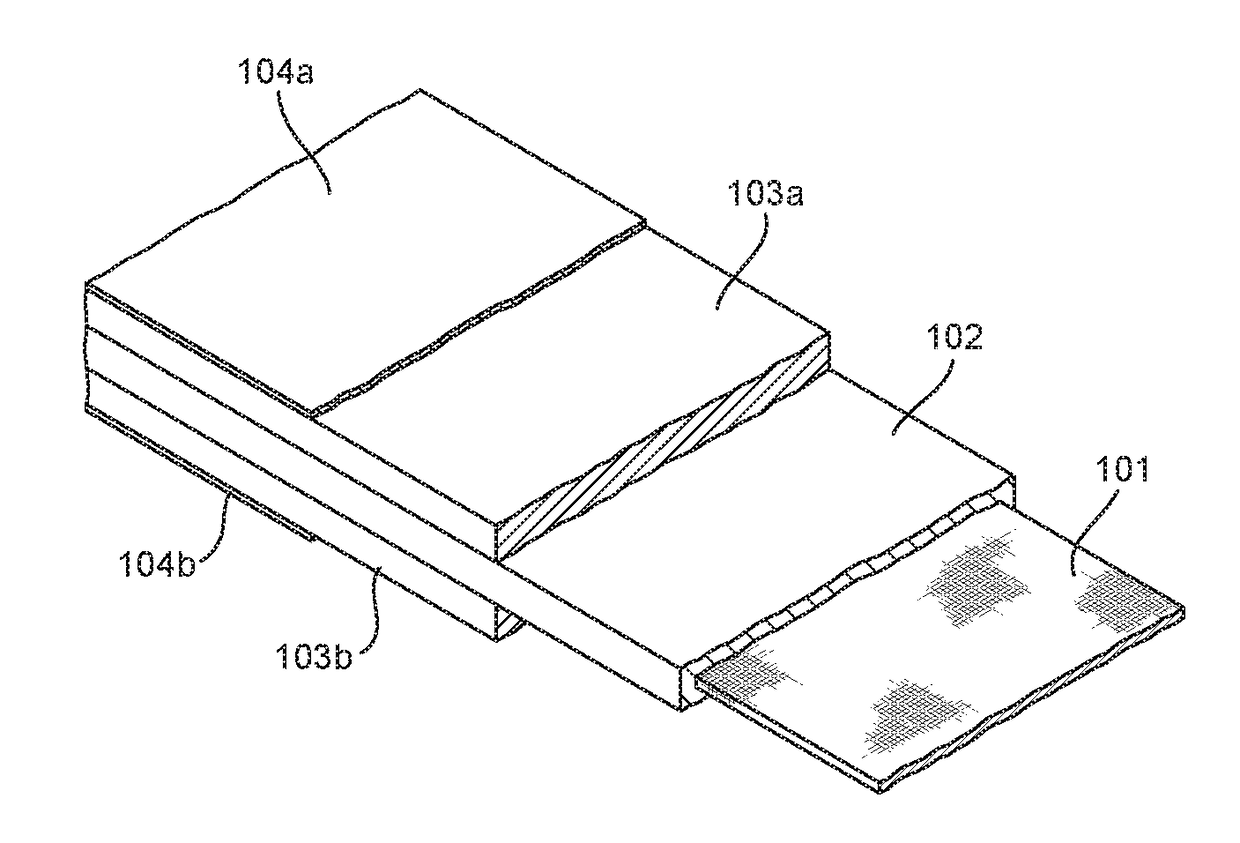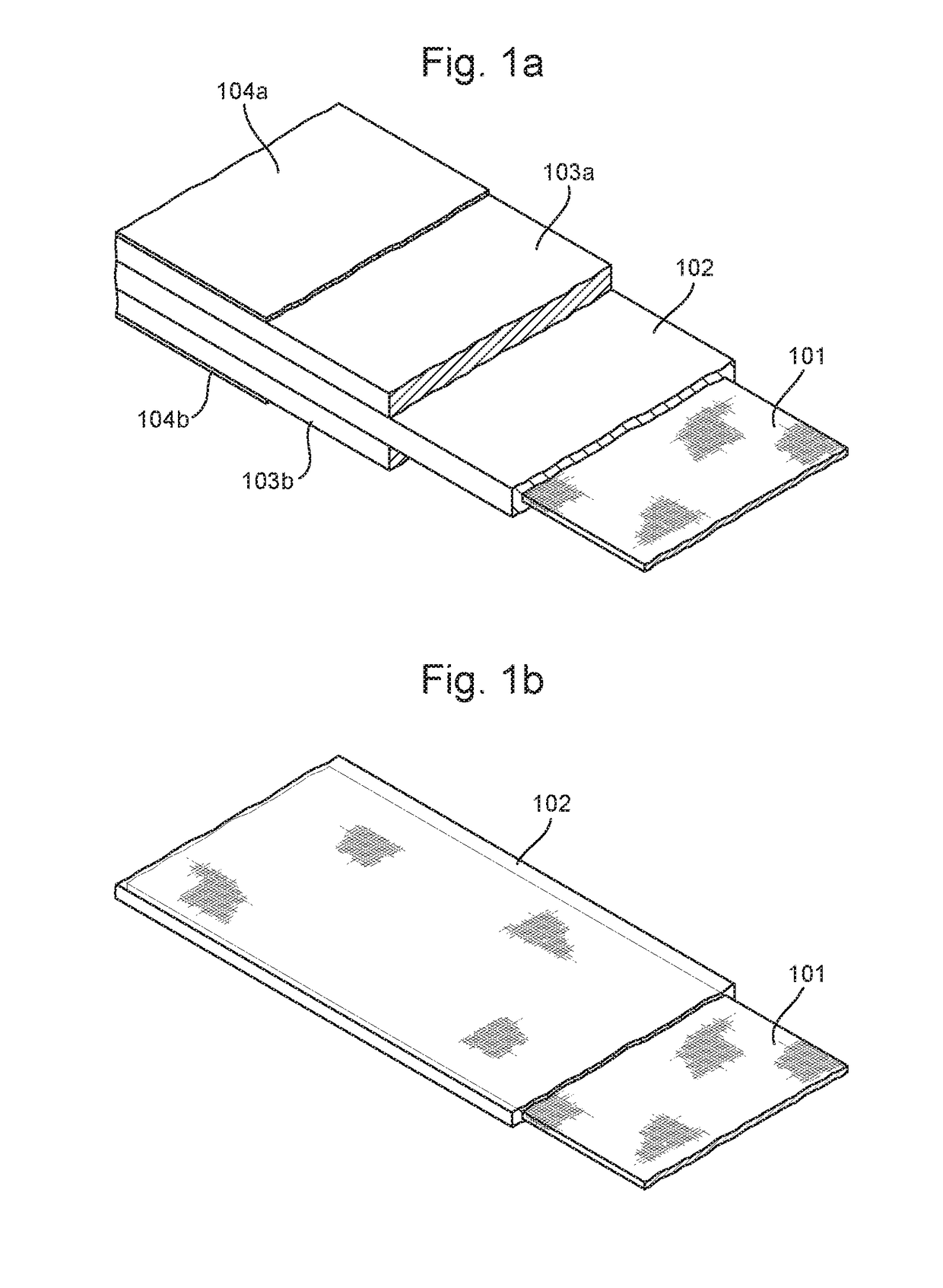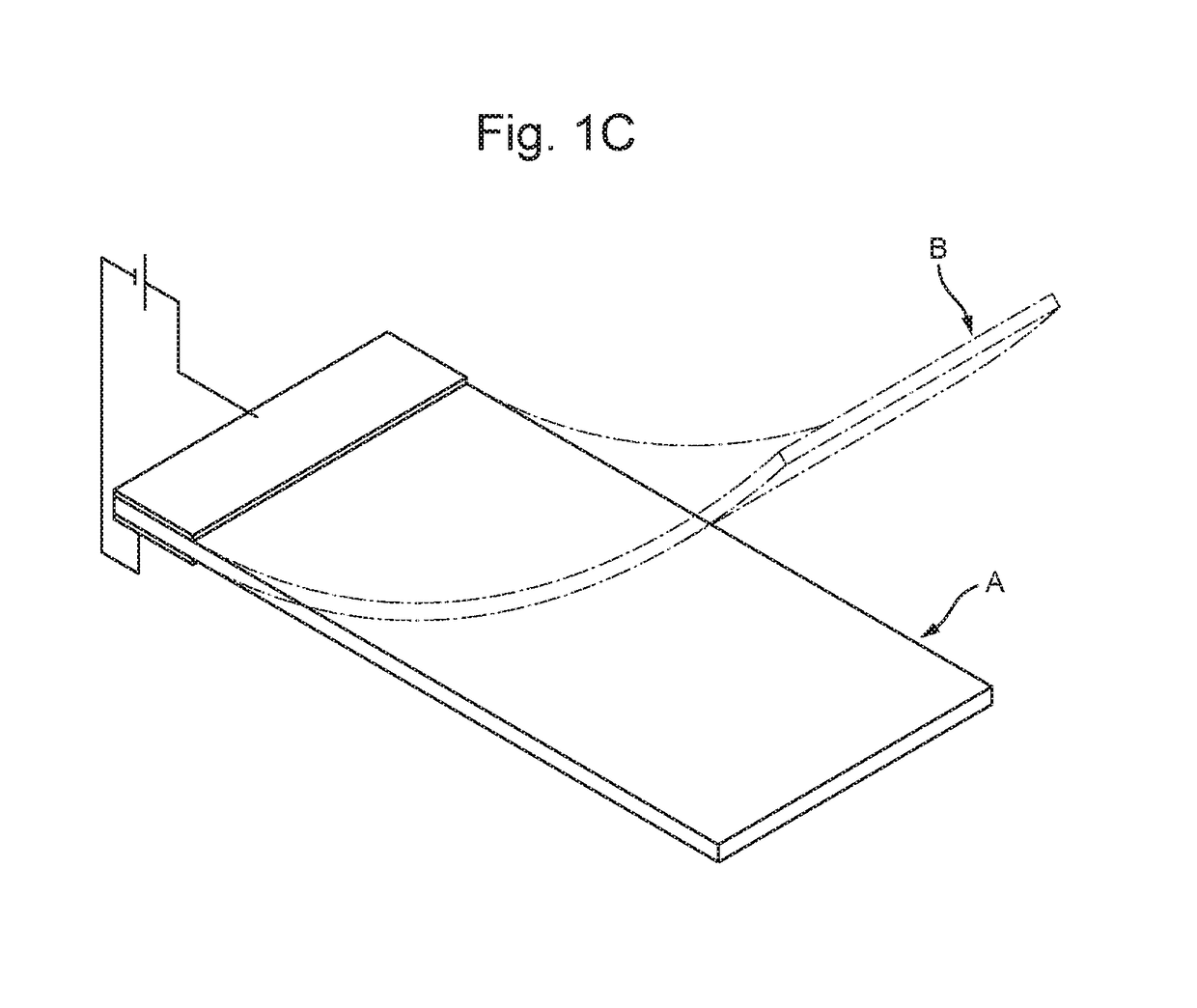Ionic Capacitive Laminate and Method of Production
a capacitive laminate and capacitive technology, applied in the field of flexible ionic electroactive polymer, can solve the problems etc., and achieve the effect of unprecedented repeatability, cost, quantity
- Summary
- Abstract
- Description
- Claims
- Application Information
AI Technical Summary
Benefits of technology
Problems solved by technology
Method used
Image
Examples
Embodiment Construction
[0038]An embodiment of the invention is shown in FIG. 1a, where a strip of ICL material comprising a core of reinforcing web 101, a polymer membrane 102, electrodes 103a, 103b and current collectors 104a, 104b are shown.
[0039]The reinforcing web 101 is preferably an inert, thin, inelastic, and electrically nonconductive mesh. However, it could be made of any material that does not dissolve in the solvents used during the fabrication process. This reinforcement grid 101 forms the middlemost layer of the ICL. A glass fibre mesh of thickness 30 to 100 micrometres (microns) is suitable as the reinforcement grid 101. The reinforcing web 101 preferably has mechanical properties of strength and flexibility, therefore a woven fabric or textile having a weft and warp of single filaments or filament bundles is suitable. The proportions of the material used for the reinforcing web 101 are selected so that the web 101 is permeable to liquid but having mesh openings that allow liquid to bridge t...
PUM
| Property | Measurement | Unit |
|---|---|---|
| thick | aaaaa | aaaaa |
| thickness | aaaaa | aaaaa |
| thickness | aaaaa | aaaaa |
Abstract
Description
Claims
Application Information
 Login to View More
Login to View More - R&D
- Intellectual Property
- Life Sciences
- Materials
- Tech Scout
- Unparalleled Data Quality
- Higher Quality Content
- 60% Fewer Hallucinations
Browse by: Latest US Patents, China's latest patents, Technical Efficacy Thesaurus, Application Domain, Technology Topic, Popular Technical Reports.
© 2025 PatSnap. All rights reserved.Legal|Privacy policy|Modern Slavery Act Transparency Statement|Sitemap|About US| Contact US: help@patsnap.com



